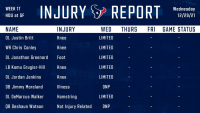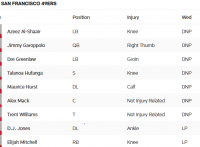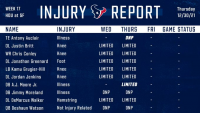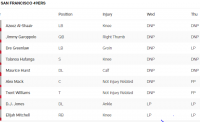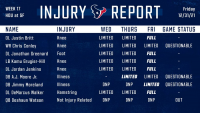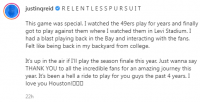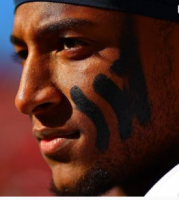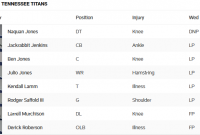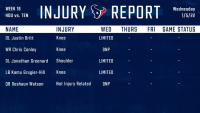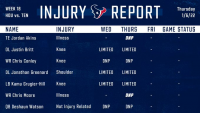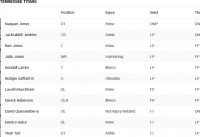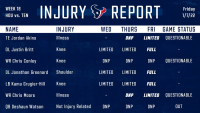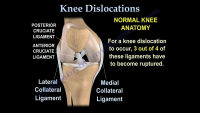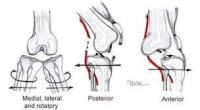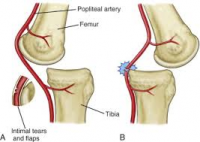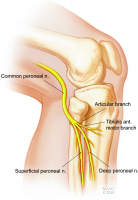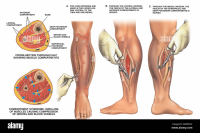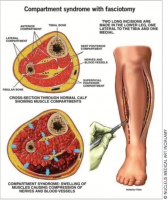Receiver in a hurry: Texans rookie John Metchie III eager for knee to heal
Brooks Kubena, Staff writer
June 1, 2022
There paced John Metchie III, a black sleeve gripping a left knee that’s keeping the rookie Texans wide receiver sidelined during the franchise’s offseason workout program.
He twirled a towel restlessly with his right hand while his teammates ran through routes, drills and plays Wednesday at the practice facility. Sometimes he tossed a football to a team staffer on the sideline. Then, with one carefree sprint as the offense moved to the other side of the field, Metchie provoked a question that will likely last through the summer:
Just how soon will the second-round pick recover from his torn ACL?
If you ask Metchie, he’d say he’s a month away from a full recovery. Minutes after the Alabama receiver was selected No. 44 overall, he told reporters he’d be “full-go football” in July, that he’d been running, cutting and jumping in the months leading up to the NFL draft and felt “better than I ever felt.”
General manager Nick Caserio later said not to “put too much stock” in Metchie’s projection. Caserio said “when he’s ready, he’ll be ready” and that the Texans weren’t “going to rush or push” Metchie.
Coach Lovie Smith has equally demurred when asked about his newest pass-catcher, who totaled 96 receptions, 1,142 yards and eight touchdowns last season before his left knee buckled while he was running a route just before halftime in December’s Southeastern Conference Championship Game.
But Metchie’s unassisted movements reflect a recovery timetable that was ahead of schedule when he declared early for the draft, says Dr. Lyle Cain, the Alabama team physician who conducted Metchie’s knee surgery.
“He’s beaten every timetable we normally have,” said Cain, the Crimson Tide’s team physician since 2001. “So based on how he does once he gets to Houston in his continued recovery, I think he has a good chance to be ready to play.”
Cain has seen Alabama athletes return anywhere between five to nine months based on how well their body responds to surgery. Since Metchie’s ACL tear was a noncontact injury, there wasn’t any other damage to the knee beyond the torn ligament. There also was very little swelling, which gave Metchie the illusion he was prepared to play in Alabama’s semifinal playoff game against Cincinnati.
“He actually thought he was OK,” Cain said. “It took a little bit of discussion and convincing that he wasn’t OK to continue playing.”
Cain repaired the ACL (which essentially stabilizes the knee and helps someone pivot and cut) by performing a standardized surgery in which the middle third of the patellar tendon — which stretches from the kneecap to the tibia — is cut out and used to replace the torn ligament.
Even post-surgery, Metchie’s knee looked “normal.” Cain said an athlete’s knee is typically still swollen for two to three weeks after an operation and has difficulty with range of motion. Metchie’s body “responded well,” Cain said, and the physician “could see early on that he was going to do well.”
“I think he’s able to hit all the milestones that the medical staff in Houston wants him to meet in terms of being ready to do things for the team this summer,” Cain said.
**************************************************************************************************
At this point in the preseason, it seems like players coming back from injuries are always "ahead of schedule."



